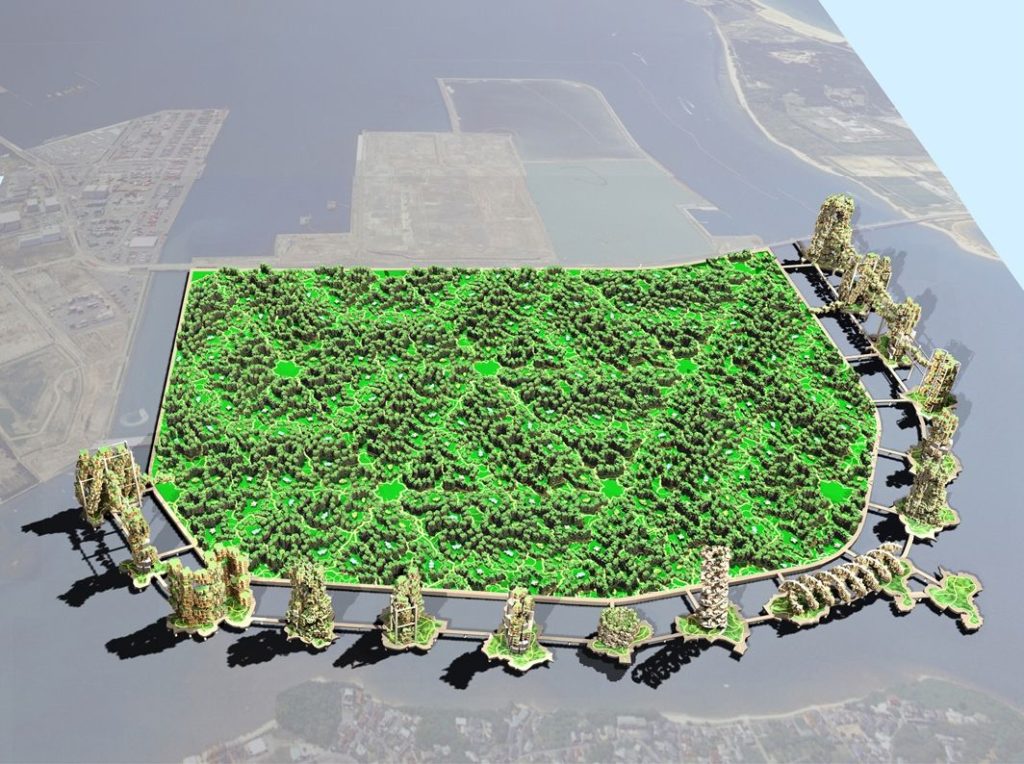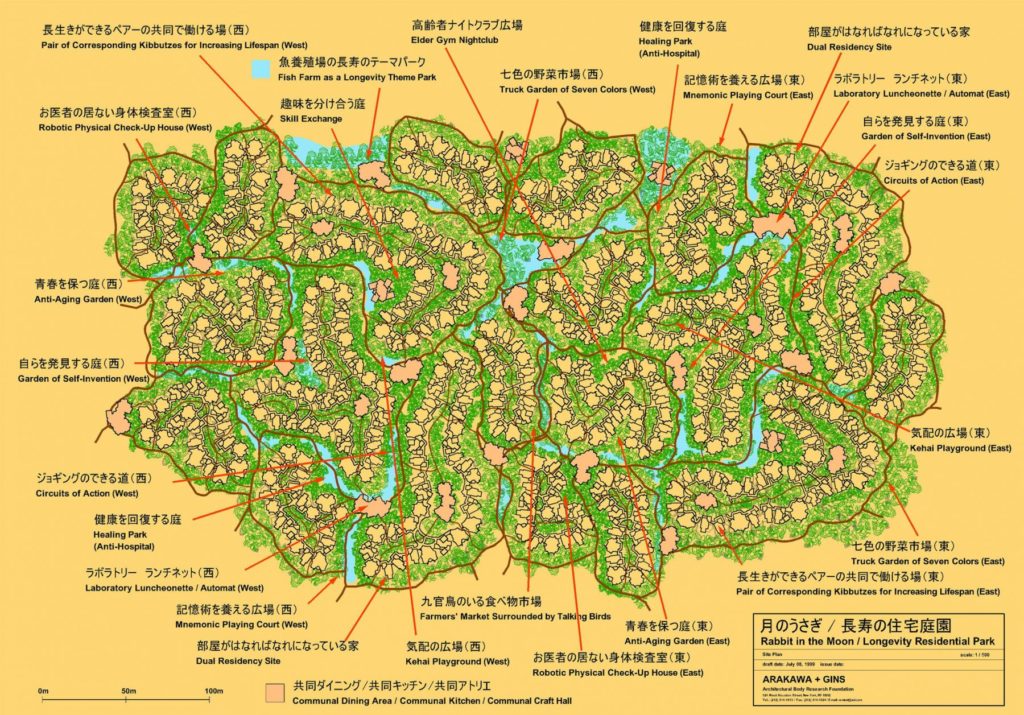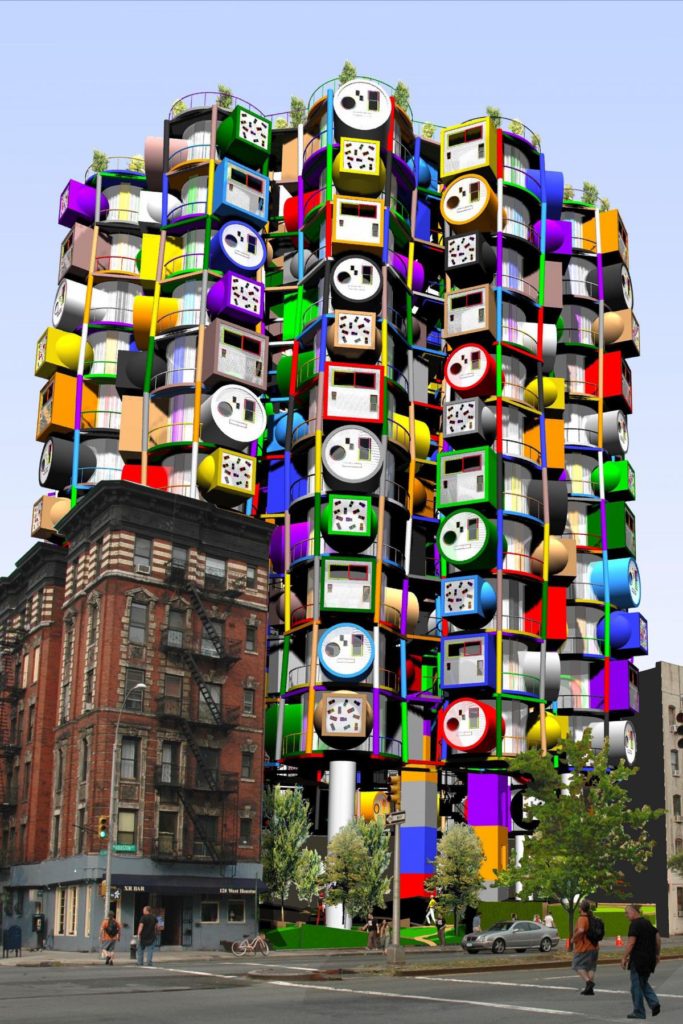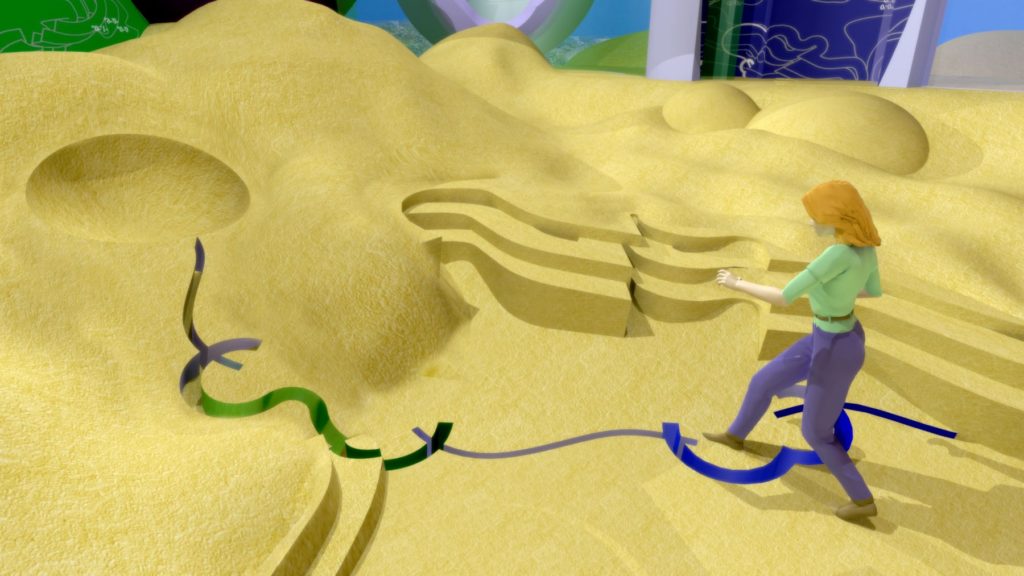After the exhibition Building Sensoriums 1973-1990 at Ronald Feldman Fine Arts, New York, Arakawa and Gins continued their investigation into how architecture could transform people’s lives through a built environment. Actively collaborating with leading practitioners in a wide-range of disciplines including (but not limited to) biology, neuroscience, quantum physics, phenomenology, and medicine, they worked on projects for residences, parks and housing complexes.
In 1994, Arakawa and Gins were awarded first prize for their master plan to build a city in Tokyo Bay. It would be a city made of neighborhoods based on modules set within layers of highly articulated terrain. While the project was never realized, Arakawa and Gins continued to develop large-scale architectural, landscape and city plans.
As Gins wrote on her imagining of the experience of Isle of Reversible Destiny, Fukuoka, 2003: “On a bright, sunny day, out you go for a stroll through an urban landscape, hometown to you, a modular city that gives new meaning to the term modularity. Within you, or, if we refer to the greater you, within your immediate vicinity, architectural volumes ignite sparks of determination of every variety on many scales of action at once. A very natural and natural-appearing engineered terrain, an extremely articulated, and, it might be said, re-articulated, terrain makes it possible for the body and the city to operate conjointly—as much kinaesthetically, proprioceptively, and tactilely as visually.”
As part of their exhibition at the Guggenheim Museum Soho in 1997, Arakawa and Gins presented plans and models for a range of houses where both the exteriors and interiors used challenging artificial terrains and labyrinths, often rotated, inverted and mirrored, to stimulate the occupants. After completing the Reversible Destiny Lofts Mitaka in 2005, Arakawa and Gins developed plans to build the Reversible Destiny Hotel in New York as “a meditative architectural context within which to demonstrate and explore the full range of human capabilities, not only those generally acknowledged to be part of the human repertoire, but still nascent ones.”
The Reversible Destiny Healing Fun House was originally conceived for Peloponnesus in Greece and a later version for Palm Springs, California. Conceived after Arakawa’s death in 2010, it was a project that Gins continued to work on in the years that followed. She described it as “a structure that contradicts itself at every turn.”










